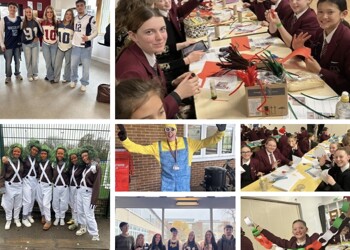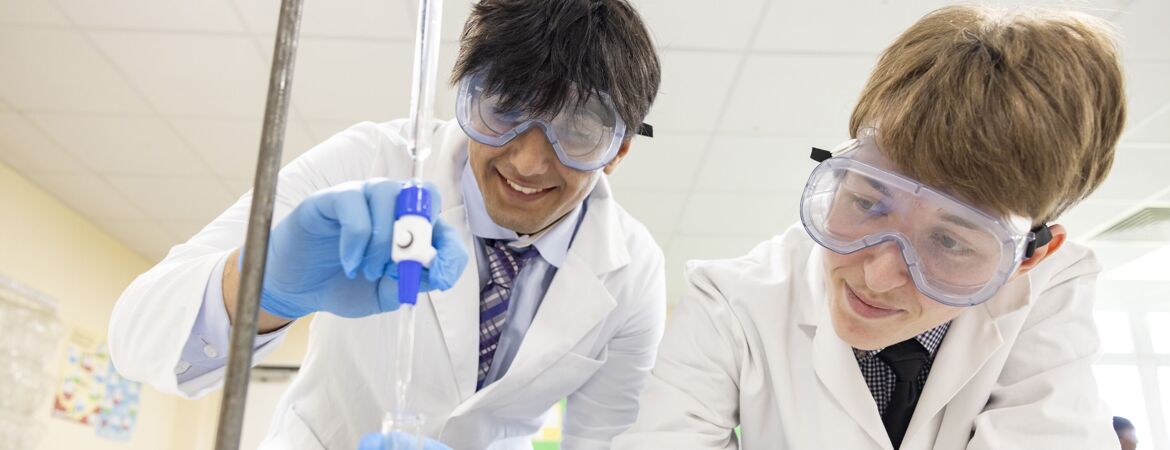 5th December
5th December
Art and Design
Curriculum Intent
A-level curriculum supports students with their progression to a higher education in Art. The curriculum provides an opportunity for students to study artists and themes which relate to their own personal interest or to their future career. Additionally, by experimenting with a variety of art media, students focus intensively on developing their own skills and strengths, by specialising in one or a combination of skills: drawing, painting, print making or sculpting. Students learn how to investigate and analyse an artist on a deeper level, and when possible, see an example of artist’s work by visiting exhibitions as a group or individually.
The Aims of the Department
Art, craft and design embody some of the highest forms of human creativity. At Blenheim High School we aim to provide a first-class art and design education, which will engage, inspire and challenge students. We will provide them with the knowledge and skills to be able to create their own works of art, craft and design. Through a process of exploration, experimentation and invention, students will develop as artists and achieve personal success.
As they progress, students will be encouraged to think critically and develop an in-depth understanding of art and design, from the past and present. They will learn how art and design both reflect and shape our history, and contribute to the culture and creativity of our world.
Contemporary art and design practises are highly valued at Blenheim High School and are implemented as much as possible.
Gallery education is also an important part of what we do. In addition to our own trips, we encourage pupils to visit galleries independently. Those who do, often benefit highly; they are inspired, and what they see informs their work. We also offer a wide range of extra-curricular activities, including portfolio support for Key Stage 4 and 5 students.
All of these things combine to make our department a forward-looking and exciting place to enjoy and achieve.
Facilities
The Art and Design department has light modern facilities with two well equipped, purpose built studios and an ICT area along with a kiln for ceramic work. On-going artwork is displayed in classrooms and completed artwork is exhibited around the school, enhancing the environment and inspiring the students. Students have access to an extensive range of materials and equipment, enabling them to fulfil their potential as artists.
A level Art and Design - Fine Art
Course DetailsStudying Fine Art is the perfect way to build on success at GCSE and develop practice as an artist to an advanced level. This helps prepare students for further and higher education, as well as explore the working practices of contemporary artists, designers and craftspeople. Students are introduced to a range of fine art media, processes and techniques, including traditional and new media. They explore the use of drawing for different purposes and use sketchbooks to underpin work. The exploration of images, artefacts and resources is a key and integral part of the course that will be shown through a combination of practical and written work. Work from around the world, both past and present, are explored. Gallery visits are an important part of A level and students are encouraged to regularly and independently visit galleries, in addition to attending school led trips. Students are required to work in one or more of the following areas and are encouraged to explore how these might, and often do, overlap:
|
||||||
Assessment
|
||||||
Enrichment OpportunitiesTrips to museums and galleries, portfolio support sessions, various exhibitions and competitions, Art Ambassadors scheme. |
||||||
Student Quotes‘The best thing about A-Level Art and Design is the freedom to decide on the work you do’ ‘We are allowed more independence and creativity. We get to really engage with our chosen subject matter’ |
||||||
ProgressionThe most common route that students take is a Foundation Diploma in Art and Design at art-school. Some successfully apply for degree courses in the arts, or related subjects, without having to complete their Foundation. Students from Blenheim have previously progressed to some of the most prestigious Art colleges in the country and the Sixth Form has strong links with the University for the Creative Arts |
||||||
Useful Linkswww.tate.org - Tate Modern and Tate Britain galleries, London |
A level Art and Design - Graphic Communication
Not available for 2025 entry.Course DetailsA Level Graphic Communication is all about the creative communication of ideas through visuals. It’s an exciting and excellent course to develop transferable skills such as creativity, collaboration, problem solving, technical and presentation skills. It could be intended for those who are interested in an Art & Design course/career which relates to many creative fields such as graphic design, illustration, advertising, UI/UX design and architecture. However, it could also be aimed at students looking for a creative option to gain transferable skills. Graphic Communication is a very creative and practical subject that allows and encourages innovation and to build a wide range of skills such as drawing, building professional portfolios, and digital skills in a range of different hardware and software. The course welcomes and celebrates creative freedom to allow students to select and explore aspects that are of particular interest for them to refine and thrive. Students are able to explore and build skills in diverse areas of design such as illustration, photography, drawing and illustrating in a range of materials (such as specialist graphic markers, paint, colouring pencils, etc), branding, advertising, packaging and many more. They are able to explore a range of hardware such as photography equipment, use of modern digital modern technologies and benefit from an updated computer suite. Furthermore, they explore a wide range of digital software to create a range of different designs such as Adobe Photoshop, Adobe Illustrator, Adobe InDesign, Sketchbook/Procreate, using AI effectively and progressively and more. An integral part of the course includes students exploring, analysing and responding to a wide range of visuals and work from different sources, time periods, artists/designers and methods. The course is centred around working towards a design brief, then, following a robust design process to develop creative problem solving by planning ideas, experimenting and exploring with different materials, methods, mediums and ideas, recording their ideas in sketchbooks/presentation folders and then to create an exciting final piece to conclude their project. |
||||||
Assessment
Component 2: Externally Set Assignment: Exam board specified themes with unlimited preparation and development time and 15 hours supervised work where students produce a final piece/s (40% - exam) |
||||||
Student Quotes“A Level Graphics covers different elements and allows students to focus on the more artistic side of design. This course develops your portfolio throughout the year building on your drawing, mixed media and digital skills.” “I have built a genuine enjoyment and love for the subject and it’s opened my eyes up to the creative industry and what there is to offer. The support and one-to-one guidance is really helpful and the teachers always thrive to make sure we are achieving our potential.” “Ideas and the ability to solve problems for companies and campaigns are more important than traditional art skills. It is one of the biggest growth areas in the Creative Industries. All sorts of areas are covered from concept art, to branding and advertising, to typography and layout design. It is the commercial aspect of the subject that makes this course so exciting.” “You get to develop thinking and communication skills as well as the ability to solve problems. Graphic Design A Level provides lots of opportunities to learn new skills working by hand, with tutorials in painting, printing and illustration. Similarly, there is plenty of time to develop digital skills too with layout, typography graphics and packaging workshops." |
||||||
ProgressionA level Graphics can be the start of a journey onto a wide range of creative careers in related areas such as: Graphic Design, Illustration, Web/app Design, UI/UX Design, Creative Director, Art Director, Photography or Photo Editing, Video & Film Editing, Branding Design, Architecture, Product designer, Animation, Motion Graphics Design and 3D Design. Students can take up places at the UK’s leading Universities for every kind of Art and Design specialism. |







